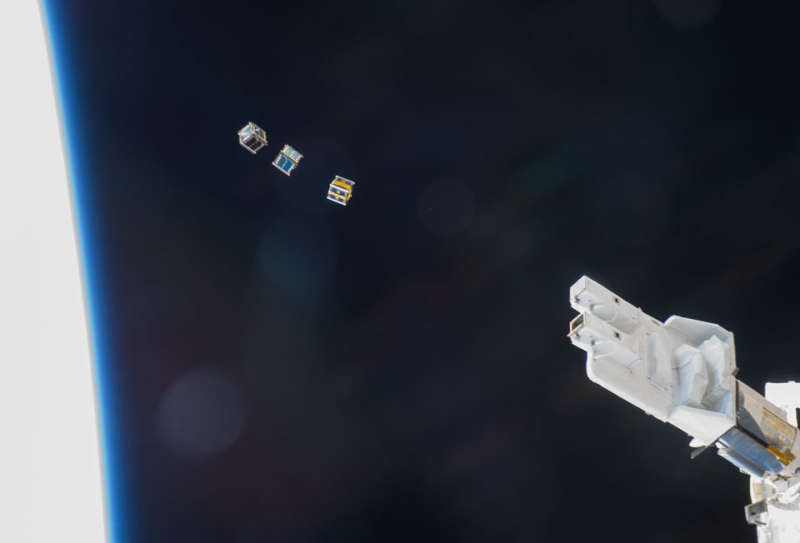Credit & Copyright: Expedition 38 Crew,
NASA
Explanation:
Cubes are orbiting the Earth.
Measuring ten-centimeters on a side,
CubeSats --
each roughly the size of a large
coffee mug --
are designed to be inexpensive both to build and to launch.
Pictured above, three CubeSats were released from the
International Space Station
(ISS) last November by the arm of the
Japanese
Kibo Laboratory module.
CubeSats are frequently created by students as part of university science or
engineering projects and include missions such as collecting
wide angle imagery of the
Earth,
testing orbital radio communications, monitoring the
Earth's magnetic field, and
exploring the Earth's
surrounding radiations.
Depending on the exact height of their release,
CubeSats
will re-enter the
Earth's atmosphere
on the time scale of months to years.
Astrophysicists:
Browse 700+ codes in the Astrophysics Source Code Library
1999 2000 2001 2002 2003 2004 2005 2006 2007 2008 2009 2010 2011 2012 2013 2014 2015 2016 2017 2018 2019 2020 2021 2022 2023 2024 2025 |
Yanvar' Fevral' Mart Aprel' Mai Iyun' Iyul' Avgust Sentyabr' Oktyabr' Noyabr' Dekabr' |
NASA Web Site Statements, Warnings, and Disclaimers
NASA Official: Jay Norris. Specific rights apply.
A service of: LHEA at NASA / GSFC
& Michigan Tech. U.
|
Publikacii s klyuchevymi slovami:
ISS - MKS - ISZ
Publikacii so slovami: ISS - MKS - ISZ | |
Sm. takzhe:
Vse publikacii na tu zhe temu >> | |
